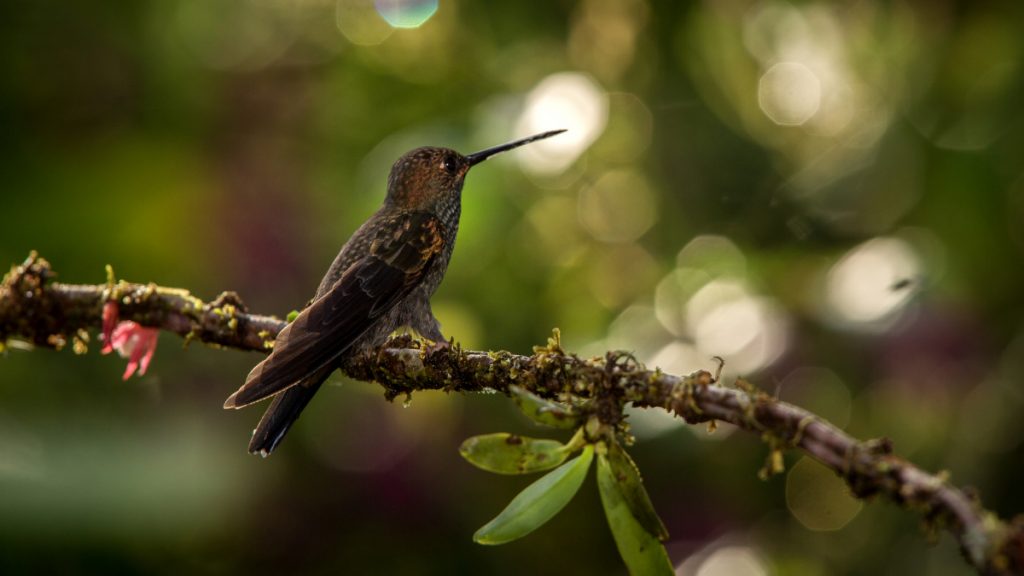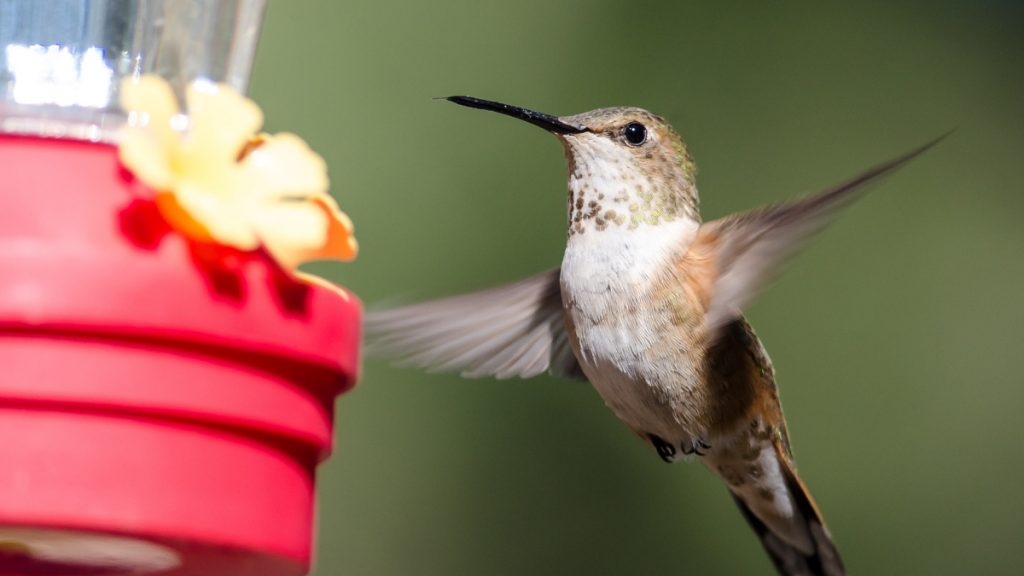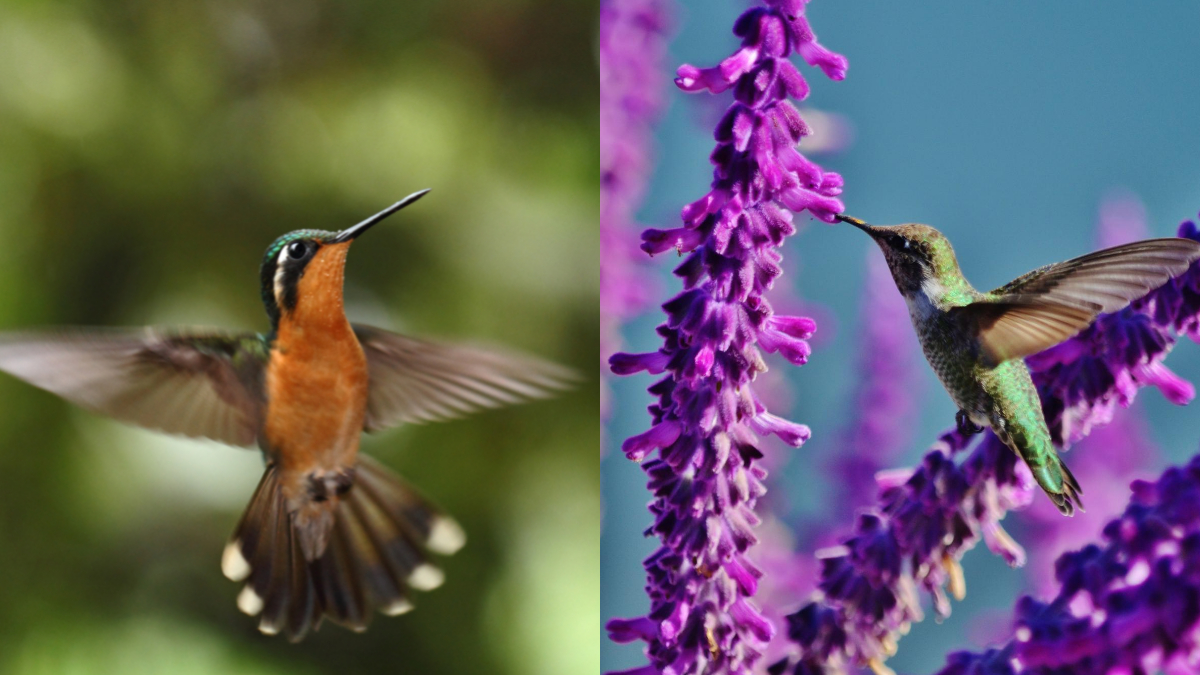If you love hummingbirds, you might wonder when these birds fly away from California yearly. These tiny, shiny birds are so amazing that they leave us all amazed when they zip around in our gardens.
Even though they’re small, hummingbirds are a big deal. These delightful birds possess qualities that make birdwatchers eagerly anticipate their arrival every year.
So, when it comes to migrating birds, hummingbirds certainly top the list. These tiny birds embark on journeys each year to various cities, states and countries in search of tropical regions where they can feed and breed.
California’s residents are considered lucky to host 3 species of hummingbirds throughout the year. However, some migratory species of these birds only make a stopover in the state. So when exactly do these visiting birds bid farewell to California?

When Do Hummingbirds Leave California?
Hummingbirds usually leave California in the fall. They start to fly away around September, and by the middle of November, most of them have left. As the days get shorter and it gets colder, it’s harder for them to find food. So, they head off to warmer places like Central America and Mexico to spend the winter.
What makes this more intriguing is the pattern followed by these departing hummingbirds. Usually, male hummingbirds tend to depart from California before the females. The females wait until they have prepared their offspring to migrate on their own before starting their journey.
Related post to read about Best Hummingbird Feeders.
- When Do Hummingbirds Leave California?
- Common Hummingbird Species In California
- Where Can You Find Hummingbirds in California?
- When Do Hummingbirds Arrive In California?
- Do The Migration Patterns Of Hummingbirds In California Change?
- What Kinds Of Plants Should Be Grown To Attract Hummingbirds?
- Can You Attract Hummingbirds With Feeders?
- When Should You Put Up Your Hummingbird Feeders In California?
- When Should Hummingbird Feeders Be Taken Down In California?
- Where Do California Hummingbirds Migrate To In The Winter?
- How Long Does It Take a California Hummingbird to Migrate?
- Conclusion
- Useful Links:

Common Hummingbird Species In California
California is home to three species of hummingbirds: the Allen’s, Anna’s and Calliope’s hummingbirds. These birds can be found in California all year long.
Other migratory species in California include the Black-chinned, Rufous, and Costas hummingbirds.
Where Can You Find Hummingbirds in California?
Aside from house gardens in California, you can find these birds at popular locations such as the San Francisco Bay Area, the University of California Arboretum Botanic Garden, and the Cabrillo National Monument.
These locations are perfect for finding them as they have many native plants that provide nectar, their main food source.

When Do Hummingbirds Arrive In California?
Migrating hummingbirds start to arrive in California at the end of January.
Unlike other migrating birds, hummingbirds don’t migrate in a group but rather individually.
The males arrive first to establish their territories, while the females arrive a bit later.
Some hummingbirds keep coming until about the middle of May. But by the end of June, all hummingbirds migrating further than California are all gone.
Do The Migration Patterns Of Hummingbirds In California Change?
California’s hummingbirds don’t have fixed migration patterns. These patterns are majorly influenced by various factors, especially weather conditions.
Hummingbirds migrate in a quest to find warmer climates, where they can find abundant supplies of their primary food sources, including nectar from flowers and insects.

What Kinds Of Plants Should Be Grown To Attract Hummingbirds?
Growing plants is the best way to attract these birds since their primary food source is the nectar obtained from plants. Some of the favourite plants of these birds are native Californian plants such as red yucca, black sage, hummingbird sage, manzanitas, California figwort, etc.
Aside from being a great way to entice these birds, opting for native Californian plants can benefit your local ecosystem. However, you have to minimise the use of pesticides, chemical fertilisers, and herbicides during planting because these substances can harm both birds and the plants they depend on.
Can You Attract Hummingbirds With Feeders?
An alternate means of providing hummingbirds with food sources is through feeders. Given that hummingbirds are naturally drawn to vibrant colours, it is best to choose feeders in bright colours, particularly shades of red, pink and orange.
Nectar feeders can be prepared with a simple solution of one cup of sugar and about four cups of water. Avoid adding food colouring and additives to this solution. Once your solution is ready, fill the feeder and hang it outside your apartment window or on tree branches.
You have to change the solution every few days, as bacteria can grow quickly in sugary water. Since you don’t want to harm your long-awaited visitors, maintenance is crucial in keeping the nectar fresh for them.

When Should You Put Up Your Hummingbird Feeders In California?
While some residents in California keep their bird feeders out all year to feed year-round resident birds, putting up your feeder in early January will attract the first set of migrating hummingbirds.
When Should Hummingbird Feeders Be Taken Down In California?
If you haven’t noticed any hummingbirds at your feeders for a couple of weeks, it is safe to take them down by mid-November. But you can leave them out all year to feed year-round resident birds. Or just in case of old or injured hummingbirds that are unable to migrate during winter.
Where Do California Hummingbirds Migrate To In The Winter?
When these tiny birds leave California, they journey southward to overwintering areas in Mexico, Guatemala, Costa Rica, and Panama. However, resident hummingbirds like the Anna’s, Allen’s and Calliope hummingbirds stay back in California all year round.

How Long Does It Take a California Hummingbird to Migrate?
The time it takes for California hummingbirds to migrate varies depending on their destination.
A California hummingbird covers the distance from the northernmost part of the state to the Mexican border, spanning 900 miles, in approximately 30 hours of continuous flight, maintaining an average migrating speed of 30 mph.
Northern California hummingbirds have to fly approximately 3,400 miles to reach Panama, which takes them about 113 hours.
It is worth noting that some hummingbirds adopt a more leisurely pace, flying for as little as 1 hour per day, while others embark on non-stop flights of up to 500 miles in about 20 hours.
Conclusion
So, you’ve seen the dance of the hummingbirds right in your own backyard, haven’t you? It’s a bit magical how, year after year, these beautiful birds find their way back to you.
Early in the year, they zip into your gardens; it is brilliant how they remember just which flower was their favourite!
Interestingly, you’re part of their journey now, and isn’t it exciting to think they’ve marked your home as a resting spot on their grand tour?
If you keep your garden welcoming, who knows which little travellers will wing back next year?
Have you ever wondered, as they hover just so, what stories they’d tell if they could talk about their travels?
Until next time, happy bird watching.
Useful Links:
Related Posts to Read – Hummingbirds Migrations:
- When Do Hummingbirds Leave Ohio?
- When Do Hummingbirds Leave Michigan?
- When Do Hummingbirds Leave Pennsylvania?
- When Do Hummingbirds Leave Florida?
- When Do Hummingbirds Leave Oregon?
- When Do Hummingbirds Leave New York?
- When Do Hummingbirds Leave Oklahoma?
- When Do Hummingbirds Leave Minnesota?
- When Do Hummingbirds Leave South Carolina?
- When Do Hummingbirds Leave Louisiana?
- When Do Hummingbirds Leave Virginia?
- When Do Hummingbirds Leave Texas?
- When Do Hummingbirds Leave Indiana?
- When Do Hummingbirds Leave Colorado?
- When Do Hummingbirds Leave Wisconsin?
Related Posts to Read:
- Hummingbird Diet and Nutrition
- Do Hummingbirds Beaks Open When Feeding?
- The Mysteries of Hummingbird Flight.
- 6 Fascinating Facts About Hummingbird Sizes.
- Ruby-Throated Hummingbird Migration Map.
- Where Do Hummingbirds Go When It Rains?
- How Much Does A Hummingbird Eat Per Day?
References:
- About California.
- About Hummingbird (Link).
- Greenewalt, C. H. (1960). Hummingbirds. New York: Doubleday. Google Scholar.
- Carey C. The impacts of climate change on the annual cycles of birds. Philos Trans R Soc Lond B Biol Sci. 2009 Nov 27; 364(1534):3321-30. doi: 10.1098/rstb.2009.0182. PMID: 19833644; PMCID: PMC2781852.
- Rico-Guevara A, Rubega MA, Hurme KJ, Dudley R. Shifting Paradigms in the Mechanics of Nectar Extraction and Hummingbird Bill Morphology. Integr Org Biol. 2019 Jan 2;1(1):oby006. doi: 10.1093/iob/oby006. PMID: 33791513; PMCID: PMC7671138.
- Tyrrell LP, Goller B, Moore BA, Altshuler DL, Fernández-Juricic E. The Orientation of Visual Space from the Perspective of Hummingbirds. Front Neurosci. 2018 Jan 30;12:16. doi: 10.3389/fnins.2018.00016. PMID: 29440985; PMCID: PMC5797624.
- Hummingbirds Sighting (Journey North Map).
- About Hummingbird’s Characteristics.
